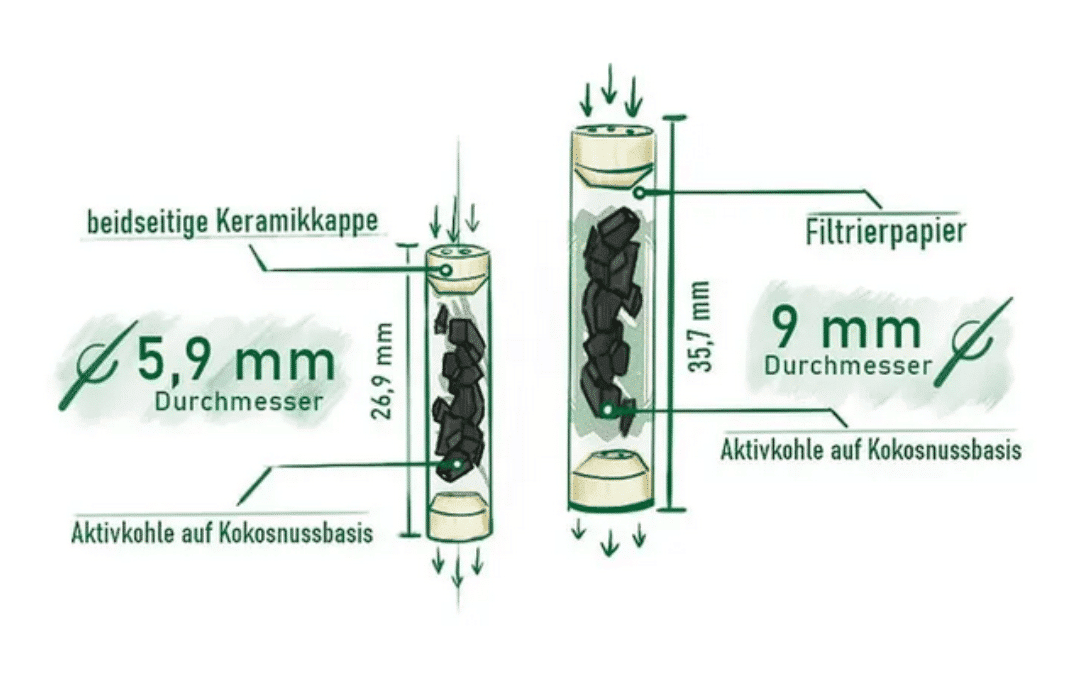Why are activated carbon filters used?
Smoking tobacco releases a variety of substances, some of which are more harmful than others. Very often, weed is smoked in combination with tobacco, which is why, especially in Europe, an activated carbon filter is used with the joint so that it captures the pollutants. According to a compact Instagram poll from bushplanet.com in Germany, 76% of respondents said they smoke joints with activated carbon filters. In the USA, on the other hand, such filters are rarely used.
How is activated carbon made and how does it work?
Activated carbon is obtained from lignite and hard coal, but can also be made from coconut fibers, nutshells, and wood and peat. The latter is then also referred to as vegetable carbon. A special manufacturing process in which the starting material is subjected to partial oxidation and heat gives the carbon a highly porous structure in which the pores are interconnected like a sponge. As a result, the coal has an enormously large inner surface area. Four grams of activated carbon can thus have an internal surface area the size of a soccer field. Due to this tight grid, the activated carbon has a strong
Absorptive capacity
.

The carbon can thus absorb heavier substances and allow lighter ones to pass through. Activated carbon is used, among other things, for air purification in factories or for water treatment. Industrial activated carbon filters are also used in cannabis cultivation to reduce the strong odor of marijuana during indoor growing. Therefore, this form of filtration in the joint is much more efficient than normal filter tips, which capture almost nothing of the substances in the smoke.
What does a charcoal filter filter out of the joint and does it affect THC?
There are about 600 pollutants in such a grass-tobacco mixture. It contains tar and nicotine, but also heavy metals such as lead, nickel and other pollutants such as arsenic, hydrogen cyanide and dioxin. In the activated carbon filter are the porous pieces of carbon, where the smoke is passed through into a narrow labyrinth. On their way through the filter, a large proportion of these pollutants are captured. After each use, these substances collect in the carbon, which gradually reduces the filtering power.
Smoker
rated differently.

